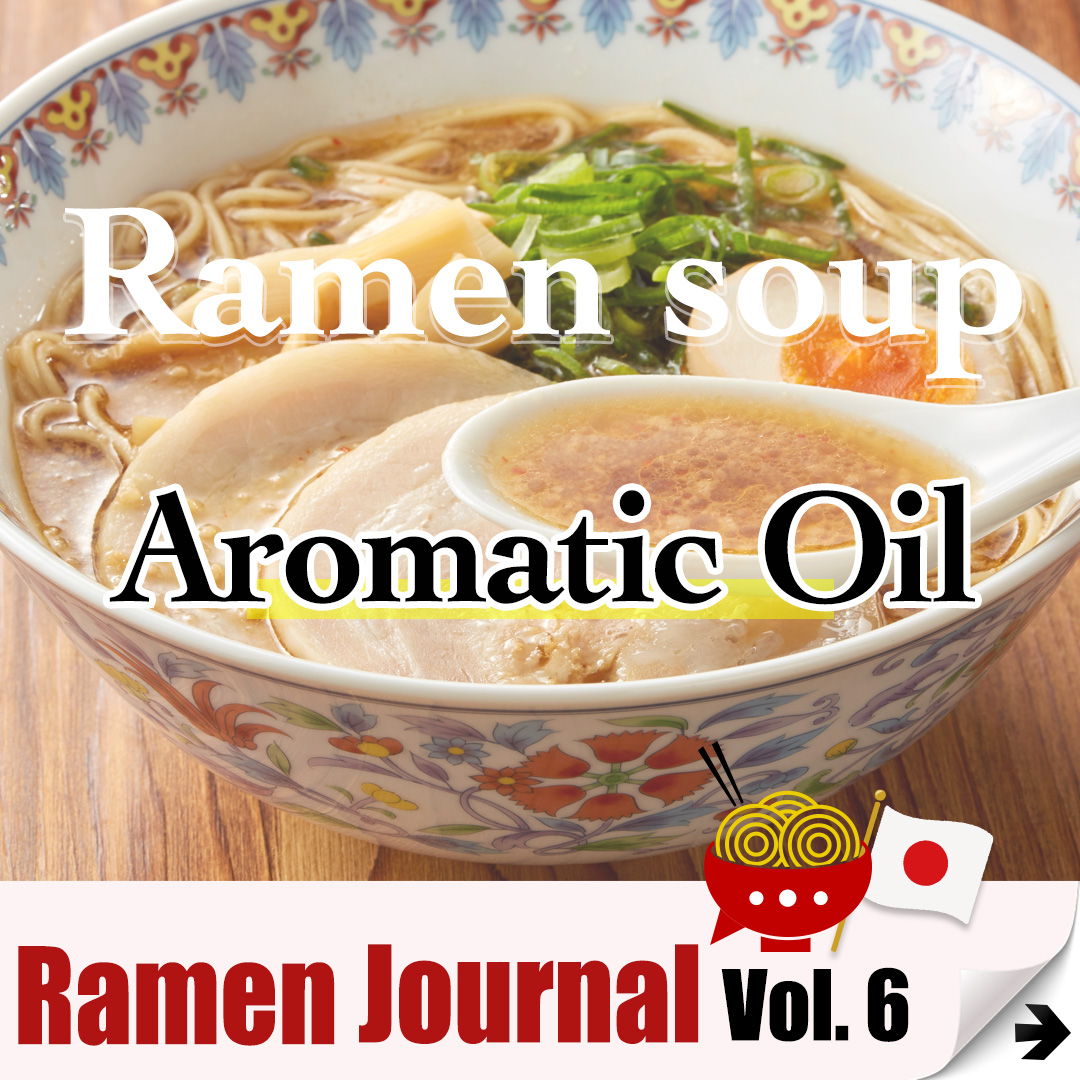In this post, I’ll delve into one of the three key components of ramen soup, known as “Aromatic Oil.”
Following my earlier posts about “Broth” in Vol.4 and “Sauce” in Vol.5, Aromatic Oil plays a crucial role in finishing off the flavor profile of ramen. The oil that floats on the surface of the ramen soup does more than whet your appetite—it’s an essential flavor enhancer.
Ramen chefs carefully use the oil produced during soup preparation, as its fats and flavors are pivotal in defining the ramen’s taste. Cooking oils are generally categorized into solids, which do not melt at room temperature, and liquids. Here are some types of aromatic oils used in ramen shops:

Lard
Lard is refined pork fat, though “mixed lard,” which includes beef fat, is commonly used. Aromatic vegetables like scallions, garlic, and ginger are slowly fried in lard to create a seasoned oil used to flavor ramen.
Butter
Butter, made from milk, is another type of fat. It’s famous for its use in Sapporo-originated butter ramen and pairs well with miso and curry ramen.
Chicken Oil
This rich oil, known for its sweetness and robust aroma, adds a smooth taste to pork bone broth.
Soybean Oil
Derived from soybeans, this oil is preferred for its lighter flavor and is used when you don’t want to add a strong taste to the soup.
Sesame Oil
Used to add a nutty aroma or emphasize a Chinese-style flavor.
Olive Oil
Gaining popularity for its use in cold and light ramen dishes.
While aromatic oil might not seem like a prominent element in ramen, it offers a variety of types and adds depth and aroma to the soup.
This is the fourth in a series of posts about ramen soup. It’s surprising how many components can go into just one bowl of ramen soup.
Stay tuned for more insights on ramen, and make sure to check out upcoming posts!
